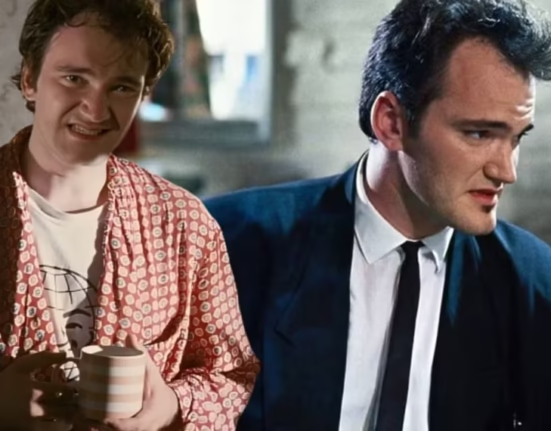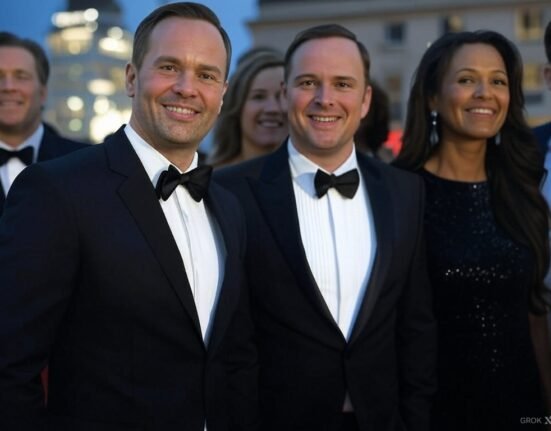Modern fashion represents a continuously evolving landscape marked by a myriad of influences, including technological advancements, social media proliferation, and cultural shifts. This dynamic nature of fashion reflects society’s changing values, norms, and identities. In recent years, the lines between high-end and streetwear have blurred, leading to a more inclusive understanding of style that embraces diversity and individuality. As a result, fashion has transformed into a significant medium for personal expression, enabling individuals to convey their identities through clothing and accessories.
Technological innovation has played a crucial role in shaping the modern fashion industry. Digital advancements have revolutionized the way consumers engage with brands, allowing for instant access to fashion trends through various online platforms. E-commerce has grown exponentially, enabling consumers to shop from the comfort of their homes. Social media, in particular, has emerged as a vital tool for fashion influencers and brands alike to showcase their creations and reach audiences worldwide. This shift has not only democratized fashion but has also spurred the rise of fast fashion, resulting in rapid trend cycles and an increased focus on immediacy in consumer preferences.
Moreover, cultural shifts driven by globalization have led to a fusion of styles from various parts of the world, resulting in a rich tapestry of influences within modern fashion. The incorporation of sustainability and ethical practices into fashion discussions reflects a growing awareness of environmental concerns and social justice, further complicating the fashion dialogue. In this context, fashion bags and clothing have emerged as vital components in establishing personal style, serving not just functional purposes but also playing an instrumental role in reflecting personal values and aesthetics.
The Impact of Street Style on Fashion
Street style has emerged as a powerful force within the modern fashion landscape, influencing not just trends in clothing but also the broader perception of what constitutes fashion itself. Originating from the vibrant urban environments and diverse subcultures, street style captures the essence of everyday attire, reflecting authenticity, individuality, and the spirit of the communities from which it arises. As a result, it transcends traditional fashion boundaries, allowing for a more inclusive understanding of style.
The intersection of street style and high fashion has been particularly noteworthy. Designers and brands increasingly draw inspiration from the streets, leading to a fusion of casual and luxury aesthetics. This relationship has blurred the lines between designer wear and everyday clothing, making high fashion more accessible and relatable. Prominent fashion houses now showcase pieces that echo the styles observed in urban areas, thus embracing the spontaneity and creativity inherent to street culture.
Several street style icons have emerged, contributing significantly to the evolution and acceptance of this trend. Figures like A$AP Rocky, Rihanna, and Harry Styles have not only set trends but also challenged conventional notions of gendered fashion, advocating for fluidity in clothing choices. Their influence has sparked a movement where personal expression takes precedence over rigid fashion norms, encouraging individuals to embrace their unique styles without fear of judgment.
Moreover, street style’s rise can be attributed to the digital age, where social media platforms enable fashion enthusiasts to share their outfits and inspirations, democratizing fashion discourse. As a result, street style has grown into a global phenomenon, impacting not only what is worn but also how style is discussed and appreciated. This democratization has fostered a richer dialogue around fashion, illustrating that the streets, with their dynamic energy, are a vital source of inspiration for the industry.
Trending Fabrics and Materials
The landscape of modern fashion is significantly shaped by the evolution of fabrics and materials, which not only emphasizes style but also incorporates elements of comfort and sustainability. One of the most notable trends is the increasing popularity of sustainable fabrics. These textiles, often derived from organic, recycled, or renewable sources, are gaining traction as consumers demand more eco-friendly options. Fabrics such as organic cotton, Tencel, and bamboo are leading this shift, offering versatile applications in both clothing and fashion accessories.
In addition to sustainability, high-tech materials have also emerged as key players in contemporary fashion. Innovations in textile engineering have given rise to performance fabrics that cater to the active lifestyle of today’s consumers. For instance, athleisure wear made from moisture-wicking, breathable materials not only provides comfort but also enhances the wearer’s performance. Similarly, smart textiles that integrate technology—such as fabrics with built-in sensors—are becoming increasingly popular, blurring the lines between fashion and functionality.
Luxury textiles continue to hold their place in the fashion hierarchy, featuring prominently in high-end designs. Fabrics like silk, cashmere, and fine wool are cherished for their elegance and quality, appealing to consumers who value craftsmanship alongside contemporary aesthetics. Designers are now blending these luxurious materials with innovative designs, resulting in pieces that accentuate both the opulence of the fabric and the creativity of the design process.
As we observe these emerging trends, it is evident that the selection of fabrics and materials is crucial in defining not only the visual appeal of garments but also their impact on the environment and user experience. The fashion industry’s move toward sustainability, technology, and luxury reflects the evolving desires of consumers who seek a harmonious balance between style and responsibility.
The Role of Accessories in Fashion
Accessories play a pivotal role in the realm of fashion, serving not only as enhancements to an outfit but also as crucial components that convey personal style and individual personality. Among various accessories, fashion bags have gained significant prominence, transforming from mere practical items into essential elements of trendy wardrobes. The varied types of fashion bags—including tote bags, clutches, and crossbody styles—allow individuals to express creativity while accommodating practical needs.
Tote bags are widely sought after for their spaciousness and versatility. These bags are ideal for daily errands or casual outings, seamlessly blending functionality with style. Many fashion-forward individuals opt for designer tote bags to showcase their fashion acumen, making a strong statement about their aesthetic preferences. In contrasted scenarios, clutches serve a more refined purpose, often utilized for formal occasions or evening events. A well-chosen clutch not only complements an elegant outfit but can also serve as a conversation starter, emphasizing an individual’s attention to detail.
Crossbody bags have also gained traction in the modern fashion landscape, known for their practicality and comfort. These bags allow for hands-free movement, making them a popular choice for dynamic lifestyles. Their adjustable straps and varied designs cater to different occasions, from casual day trips to sophisticated night outings. As fashion trends evolve, these accessories increasingly reflect ongoing changes in societal attitudes and personal expression, blending functionality with style and serving as a bridge between utility and elegance.
In conclusion, accessories, particularly fashion bags, significantly contribute to the overall styling of a wardrobe. They offer a unique opportunity for individuals to showcase their personal flair while enhancing the functionality of their outfits. As styles continue to evolve, the importance of thoughtfully selected accessories remains paramount in defining modern fashion.
Sustainable Fashion and Its Importance
The concept of sustainable fashion has gained considerable traction in recent years, reflecting a growing awareness among consumers regarding the environmental and ethical implications of their clothing and accessory choices. As the fashion industry stands as one of the most polluting sectors globally, the need to adopt sustainable practices has never been more pronounced. Sustainable fashion emphasizes eco-friendly materials, ethical labor practices, and a shift from the traditional fast fashion model towards what is often termed “slow fashion.”
Eco-friendly materials form a cornerstone of sustainable fashion, as they seek to minimize harm to the environment. Brands are beginning to incorporate organic cotton, recycled polyester, and even innovative textiles like Tencel and hemp. These materials require less water and fewer chemicals to produce, thereby contributing positively to environmental conservation. Additionally, the concept of slow fashion advocates for quality over quantity, encouraging consumers to invest in fewer pieces that are durable and timeless, rather than engaging in the cycle of fast fashion that promotes rapid consumption and disposal.
Several pioneering brands are leading the charge in the sustainable fashion movement. Companies such as Stella McCartney and Eileen Fisher are recognized for their commitment to ethical practices and transparency. They not only prioritize sustainable material composition in their products but also ensure fair labor practices along their supply chains. These brands highlight that fashion can be both stylish and responsible. Furthermore, consumers are encouraged to seek brands that align with their values, ensuring their purchases contribute positively to the planet and society.
As consumers become more informed about the impacts of their fashion choices, the demand for sustainable options is expected to rise. The shift towards sustainable fashion signifies a profound change in the industry, ultimately fostering a more ethical and eco-conscious culture. By making deliberate choices, shoppers can help build a more sustainable future.
Influence of Social Media on Fashion Trends
In recent years, social media has emerged as a formidable force in the evolution of fashion trends, profoundly influencing consumer behavior and altering traditional marketing strategies. Platforms such as Instagram and TikTok have become the go-to arenas for fashion brands, influencers, and celebrities to showcase their apparel and accessories, including fashion bags. These platforms enable real-time interaction, allowing consumers to engage with their favorite figures and brands, fostering a sense of community within the fashion space.
Through visually-driven content, influencers leverage their social media platforms to present a curated interpretation of contemporary fashion. For instance, a simple post or story featuring a trending handbag can captivate followers and spark increased interest in specific styles or brands. As influencers often have substantial followings, their endorsement of particular items can lead to significant upticks in consumer demand, transforming the marketing dynamic in the fashion industry.
Moreover, the role of celebrities remains pivotal, as their presence on social media platforms helps to amplify fashion trends to wider audiences. When a well-known figure endorses a designer or highlights an emerging trend, it often creates an immediate buzz, which translates into rapid consumer interest and sales growth. The fusion of celebrity influence with social media engagement facilitates a faster trend cycle, where styles can go from obscurity to prominence within days.
Additionally, user-generated content has also gained traction, with individuals sharing their personal takes on fashion trends through hashtag campaigns and challenges. This grassroots involvement democratizes fashion, allowing consumers to assert their preferences and mold trends collectively. As a result, social media platforms not only promote established brands but also encourage emerging designers, leading to a more diverse fashion landscape.
The Intersection of Fashion and Technology
The relationship between fashion and technology has evolved significantly over the past few decades, creating new dimensions in both design and consumer engagement. The advent of digital fashion shows has revolutionized how brands showcase their collections. No longer confined to physical runways, these virtual events allow designers to reach a global audience, breaking down geographical barriers. This innovation not only democratizes access to high fashion but also provides an interactive experience, enabling viewers to engage with the showcased pieces in real time.
Moreover, the integration of virtual reality (VR) into the fashion world presents endless possibilities. With VR, consumers can immerse themselves in entirely virtual environments, allowing them to try on clothing and accessories without the need for physical garments. This technology enhances the online shopping experience, addressing a significant challenge faced by fashion e-commerce—how to replicate the feel and fit of clothing. By offering virtual fitting rooms, brands cater to consumer preferences while minimizing the risk of returns, thereby streamlining the purchasing process.
3D printing technology is another transformative element in the intersection of fashion and technology. This innovative method enables designers to create intricate garments and accessories with unprecedented precision. Rather than relying on traditional production methods, which can be time-consuming and resource-intensive, 3D printing allows for on-demand manufacturing. This shift not only reduces waste in the fashion industry but also fosters creativity, as designers can experiment with complex structures and patterns that were previously difficult to construct. As a result, the possibilities for customization and personalization have significantly increased, ensuring that consumers can find unique pieces that reflect their personal style.
In conclusion, the intersection of fashion and technology is progressively reshaping the industry. As digital fashion shows, virtual reality, and 3D printing continue to evolve, they make fashion more accessible, interactive, and sustainable. The ongoing integration of these technologies highlights a revolution in how consumers engage with fashion, paving the way for future innovations that will further enrich the fashion landscape.
The Evolution of Fashion Bags: Styles and Trends
Fashion bags have undergone a remarkable transformation over the decades, becoming not only functional accessories but also essential elements of personal style. The evolution of these bags reflects broader changes in fashion trends, societal roles, and technological advancements in materials. Initially, bags originated as practical means for carrying personal items, but they quickly evolved into symbols of status and individuality.
In the mid-20th century, the introduction of innovative materials like leather and synthetic fabrics allowed for greater diversity in bag design. Handbags began to take on unique shapes and sizes, with designers experimenting with colors and embellishments. The iconic “Chanel 2.55,” introduced in 1955, exemplified luxury and practicality, allowing women to go hands-free while maintaining sophistication. Similarly, the “Birkin bag” from Hermès, launched in the 1980s, became synonymous with wealth and exclusivity, showcasing how bags can embody cultural status.
As we moved into the 21st century, fashion bags reflected the shift towards sustainability. The rise of eco-friendly materials gained traction, with brands increasingly prioritizing environmentally conscious practices. The trend of “upcycling” also gained prominence, where vintage or discarded materials were transformed into fashionable bags, merging the old with the new in stimulating ways.
Moreover, the advent of technology has influenced both functional and aesthetic aspects of fashion bags. With the rise of smartphones, many bags now include compartments designed specifically for seamless device access. Additionally, the prevalence of streetwear has brought about a resurgence of backpacks, crossbody bags, and fanny packs, bridging the gap between casual style and high fashion.
Throughout the years, fashion bags have not only adapted to changing trends but have also served as reflections of cultural shifts and societal values. As we continue to witness the dynamic interplay between fashion and society, the continual evolution of fashion bags will surely remain a fascinating subject to explore.
Conclusion: Embracing Individuality in Fashion
In today’s rapidly evolving fashion landscape, the significance of personal style has never been more pronounced. Fashion serves as a canvas for self-expression, allowing individuals to communicate their unique identities through clothing, accessories, and, importantly, fashion bags. The plethora of styles available today offers a remarkable opportunity for each person to cultivate a wardrobe that reflects their distinct tastes and preferences.
As trends emerge and fade, the essence of modern fashion lies in the power of individuality. While it is easy to be swayed by the latest trends showcased by influential designers or social media icons, it is crucial to remember that true style is not defined by what is currently popular, but rather by what resonates with one’s personality and lifestyle. Whether it be chic handbags that embody elegance or casual wear that offers comfort, the choices we make should ultimately reflect who we are.
Moreover, embracing individuality in fashion does not imply abandoning trends altogether. Instead, it encourages a thoughtful approach to incorporating elements of current styles that align with personal preferences. The key is to curate a wardrobe that balances both personal flair and trend awareness, paving the way for an authentic fashion statement. Accessories, including fashion bags, play a vital role in enhancing overall looks and can serve as focal points that underscore one’s personality.
In conclusion, the journey of modern fashion is an invitation to explore and celebrate individuality. By confidently expressing one’s unique aesthetic through clothing and accessories, individuals can create a fashionable narrative that is distinctly their own. Ultimately, the evolution of fashion reminds us that style is an ongoing process of self-discovery, making it essential to embrace and honor personal creativity in every outfit.













Leave feedback about this